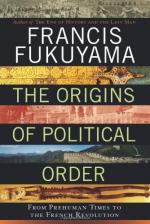
|
| Name: _________________________ | Period: ___________________ |
This test consists of 15 multiple choice questions and 5 short answer questions.
Multiple Choice Questions
1. When did the Han Dynasty hold power?
(a) 226 B.C to 9 A.D.
(b) 206 B.C to 9 B.C.
(c) 206 B.C to 19 A.D.
(d) 206 B.C to 9 A.D.
2. What was the Bahri regiment named after?
(a) A lake.
(b) A fortress.
(c) A king.
(d) A god.
3. Who wrote Communist Manifesto?
(a) Jean Jacques Rousseau.
(b) Lenine.
(c) Karl Marx.
(d) Friedrich Engels.
4. What weapons played a key role in the fall of Constantinople?
(a) Long bows.
(b) Catapult.
(c) Chariots.
(d) Firearms.
5. Who helped the Emperor stage a coup against Empress Liang's house according to Chapter 9?
(a) Mercenary troops.
(b) His brothers.
(c) Loyal peasants.
(d) Eunuchs.
6. How many movies does Nigeria produce?
(a) As much as Bollywood.
(b) As much as France.
(c) As much as Hollywood.
(d) As much as Germany.
7. When did Bimbisara become king?
(a) Second half of 17th century.
(b) Second half of 14th century.
(c) Second half of 16th century.
(d) Second half of 15th century.
8. What is a particularly well-developed and pure example of segmentary lineage organization?
(a) The Mari.
(b) The Grum.
(c) The Nuer.
(d) The Glo.
9. When did the predynastic Yangshao period run according to Chapter 6?
(a) 6000 to 5000 B.C.
(b) 7000 to 3000 B.C.
(c) 5000 to 3000 B.C.
(d) 8000 to 2000 B.C.
10. When did India and China start diverging significantly?
(a) 900 B.C.
(b) 600 B.C.
(c) 700 B.C.
(d) 800 B.C.
11. When did the Qin Dynasty start ruling over the whole of China?
(a) 230 B.C.
(b) 250 B.C.
(c) 221 B.C.
(d) 321 B.C.
12. What happened in 173, 179 and 182 in China?
(a) Epidemics.
(b) Innovation.
(c) Wars.
(d) Floods.
13. When were the collective farms disbanded in China?
(a) 1975.
(b) 1978.
(c) 1976.
(d) 1972.
14. When did Chandra Gupta I rise to power?
(a) 340 A.D.
(b) 330 A.D.
(c) 320 A.D.
(d) 50 A.D.
15. When did Caliph al-Mahdi rise to power?
(a) 756.
(b) 845.
(c) 742.
(d) 775.
Short Answer Questions
1. When did the Gauls choose to elect a common authority for the whole confederation?
2. What was Steven Pinker's occupation?
3. When did Alexander I of Russia manage to overrun a good part of Europe?
4. How many Kalinga died during the Kalinga campaign?
5. When did the Mamluk regime fall?
|
This section contains 334 words (approx. 2 pages at 300 words per page) |

|




